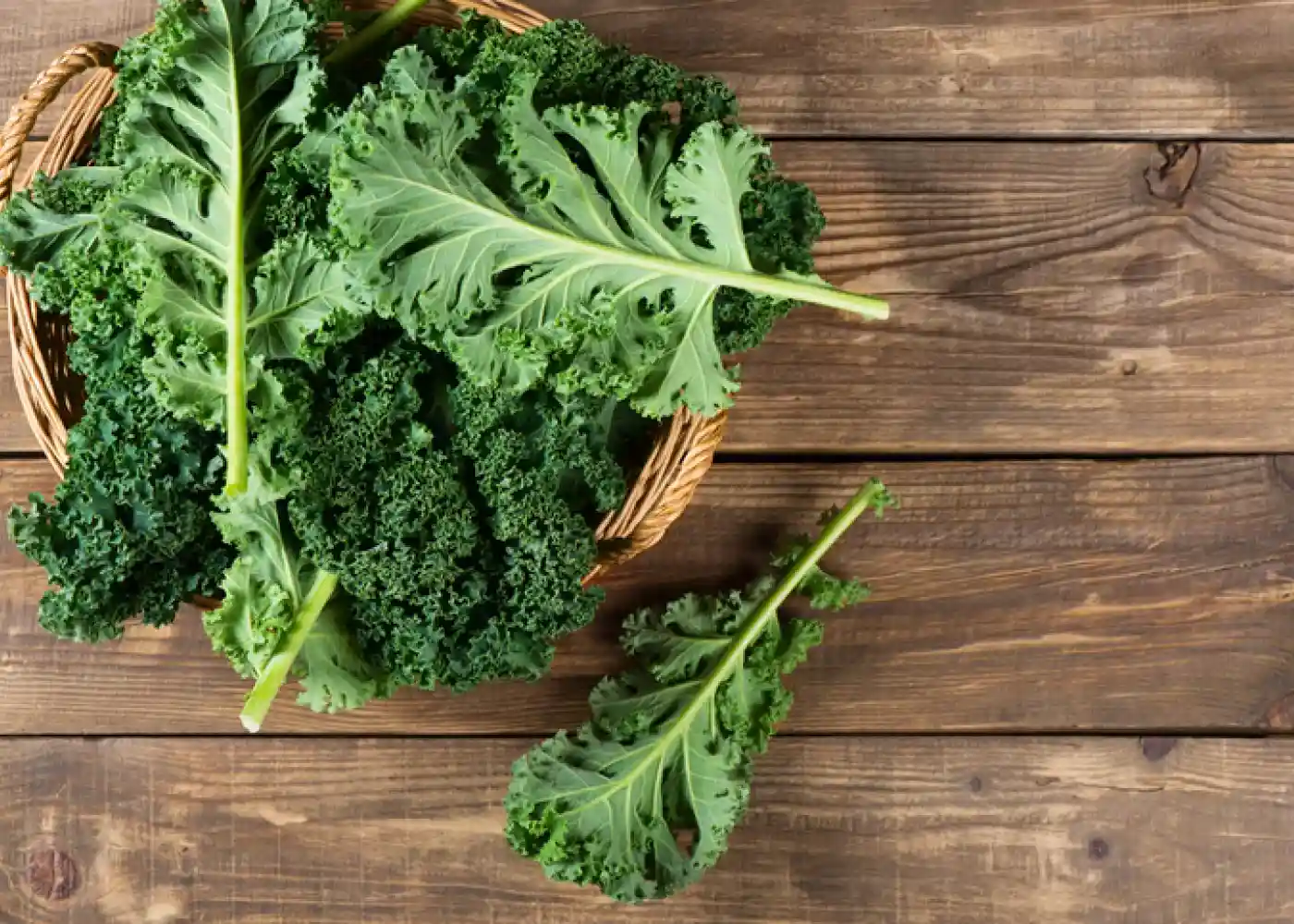 Whether you have low vision or normal sight, your eyes are one of your most precious assets and deserve to be cared for. Every day, our eyes silently serve us, enabling us to work, learn, and enjoy our favorite pastimes. As modern lifestyles increasingly strain our vision, it’s essential to prioritize eye health. Fortunately, nature provides us with “green secrets” — spinach and kale. These leafy greens are not just beneficial for overall health but also offer incredible support for eye wellness.
Whether you have low vision or normal sight, your eyes are one of your most precious assets and deserve to be cared for. Every day, our eyes silently serve us, enabling us to work, learn, and enjoy our favorite pastimes. As modern lifestyles increasingly strain our vision, it’s essential to prioritize eye health. Fortunately, nature provides us with “green secrets” — spinach and kale. These leafy greens are not just beneficial for overall health but also offer incredible support for eye wellness.
Green Vegetables: The Superheroes of Eye Health

Spinach and kale aren’t just dietary staples; they are also powerful allies in protecting our eyes. These vegetables are rich in lutein and zeaxanthin, two carotenoids often called “natural shields” for their ability to defend our eyes against harmful blue light. These nutrients act like sunglasses, filtering damaging light and reducing retinal stress, which slows down aging and protects against eye disease.
Recent studies bolster their reputation. In 2024, a groundbreaking study revealed that lutein and zeaxanthin significantly improved macular pigment optical density (MPOD) and visual function in individuals with prolonged screen exposure. This protection is particularly valuable in today’s digital age (Frontiers in Ophthalmology, 2024).
Lutein and Zeaxanthin: Guardians of the Retina
Lutein and zeaxanthin are key carotenoids that accumulate in the macula, the part of the retina responsible for central vision. Their main role? Shielding the retina from oxidative stress and harmful blue light. Long-term consumption of foods rich in these nutrients has been linked to reduced risks of cataracts and age-related macular degeneration (AMD) (Curcio & Johnson, 2016).
A 2024 study highlighted their impact on young adults and children. The findings showed that supplementing with lutein and zeaxanthin significantly enhanced macular pigment density, reduced eye fatigue, and improved cognitive functions like memory and focus (Rajesh et al., 2024). This underscores their importance for eye health across all ages.
Other Nutrients in Spinach and Kale Supporting Eye Health
Beyond lutein and zeaxanthin, spinach and kale are nutrient powerhouses that contribute to overall eye health:
- Vitamin A: Crucial for maintaining the eye’s light-sensing cells, vitamin A prevents night blindness and promotes healthy vision.
- Vitamin C: A potent antioxidant, vitamin C protects eye tissues from oxidative damage, reducing the risk of cataracts (Johnson & Sharifzadeh, 2019).
- Omega-3 Fatty Acids: Found in kale, Omega-3s help maintain moisture and reduce symptoms of dry eye syndrome — a common issue in our screen-dominated lives.
These nutrients form a comprehensive defense system, helping your eyes stay strong and healthy in the face of modern challenges.
Easy Ways to Include Spinach and Kale in Your Diet
Incorporating these leafy greens into your meals doesn’t have to be a chore. Here are some practical tips:
- Breakfast Boost: Add spinach to your smoothies or omelets for a nutrient-packed start to your day.
- Lunch Light: Toss kale into salads with olive oil, lemon juice, and nuts for a quick, healthy meal.
- Dinner Delight: Include spinach in soups, stews, or pasta dishes. You can also sauté kale as a side dish.
Experimenting with these greens not only diversifies your diet but also ensures your eyes get the nutrients they need.
Protecting Your Eyes Beyond Diet: The Role of Greenery

In addition to eating leafy greens, surrounding yourself with greenery can benefit your eyes. Having plants like kale or spinach near your workspace not only adds a touch of nature but also offers a mental and visual break from screens. Studies have shown that looking at greenery helps reduce eye strain and promote relaxation.
Simple acts like stepping outside to view natural scenery or keeping plants on your desk can make a big difference in combating screen fatigue.
The Bigger Picture: A Balanced Diet for Optimal Vision
While spinach and kale are nutritional champions, a well-rounded diet is crucial for holistic eye care. Foods rich in:
- Omega-3 Fatty Acids (e.g., salmon, tuna): Reduce dry eye syndrome and support retinal health.
- Zinc (e.g., oysters, beef, pumpkin seeds): Bolster the immune system and reduce the risk of night blindness.
Pairing these with spinach and kale ensures your eyes get comprehensive protection.
Why Now? The Modern Relevance of Eye Health
The rise of digital screens has increased the prevalence of conditions like eye fatigue, dryness, and even digital eye strain. The retina, already under constant stress, faces additional pressure from prolonged screen exposure.
2024 research emphasizes the importance of preventive measures. For example, a study on young adults revealed that lutein and zeaxanthin supplementation reduced digital eye strain and protected against long-term retinal damage caused by blue light (Frontiers in Ophthalmology, 2024; Rajesh et al., 2024). This research reinforces the role of these nutrients in adapting to modern visual challenges.
The Green Diet: Your Path to Healthy Living
Spinach and kale are more than just nutritious vegetables; they’re essential components of a diet that supports lasting eye health. By incorporating these greens into your meals and combining them with other nutrient-rich foods, you can protect your vision and reduce the risk of age-related conditions.
So, what are you waiting for? Stock up on spinach and kale during your next grocery trip and start investing in your eye health today. Your future self will thank you!
References
- Curcio, C. A., & Johnson, M. (2016). The role of macular pigment in eye health. Ophthalmology Clinics of North America, 29(2), 1–7. https://doi.org/10.1016/j.ohc.2016.02.001
- Johnson, E. J., & Sharifzadeh, M. (2019). The relationship between lutein and zeaxanthin intake and age-related macular degeneration: A review. Nutrients, 11(3), 629. https://doi.org/10.3390/nu11030629
- Rajesh, P., Hammond, B. R., & Chandradhara, D. (2024). Lutein and Zeaxanthin Supplementation Improves Dynamic Visual and Cognitive Performance in Children. Advances in Therapy. https://doi.org/10.1007/s12325-024-02312
- Frontiers in Ophthalmology. (2024). Effect of lutein, zeaxanthin, and omega-3 fatty acid supplementation on visual function in young adults. Frontiers in Ophthalmology Research. https://doi.org/10.3389/fop2024

